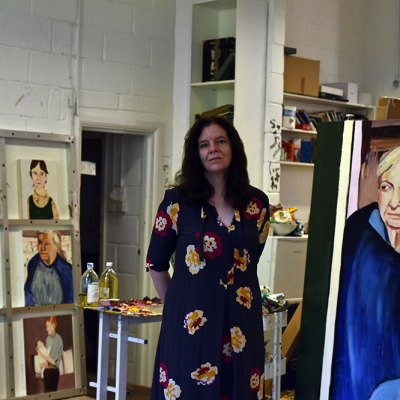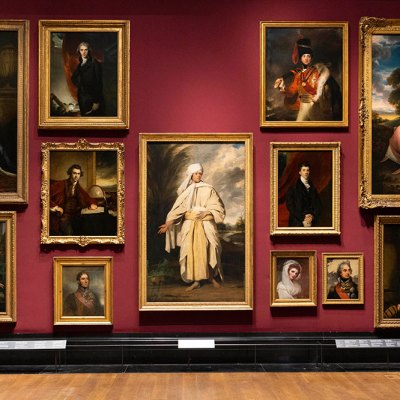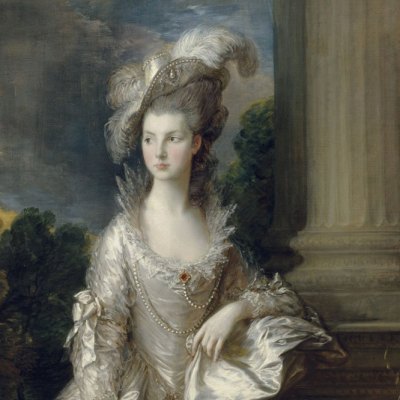From the January 2025 issue of Apollo. Preview and subscribe here.
Late last year, as sticky mists of glühwein descended over the faux-snow-streaked pavements of Bath, I was joined by Chantal Joffe and Claudette Johnson for a conversation about portraiture. Both artists are in ‘Being There’ at No 1 Royal Crescent, an exhibition celebrating the return to Bath of four portraits by Thomas Gainsborough. I opened our discussion by asking if either artist thought of their own paintings as portraits. They did not. The word evoked a discreet shudder. This might seem curious, given that the human figure is a principal subject for both. They paint and draw family members, friends and very often themselves. Joffe credits her sitters by name. In Denise and Olivia (2019), the writer Olivia Laing sits beside her mother; in Esme and Gori (2007), the artist’s young daughter clutches a favourite doll. Johnson’s titles tend to be more enigmatic: a bare accounting of figures and colours. The small oil pastel that supplies the exhibition’s poster image is, accordingly, Self Study (Blue Hat on Green) (2024).
Self Study (Blue Hat on Green) (2024), Claudette Johnson. Photo: Andy Keate; courtesy the artist/Hollybush Gardens, London; © the artist
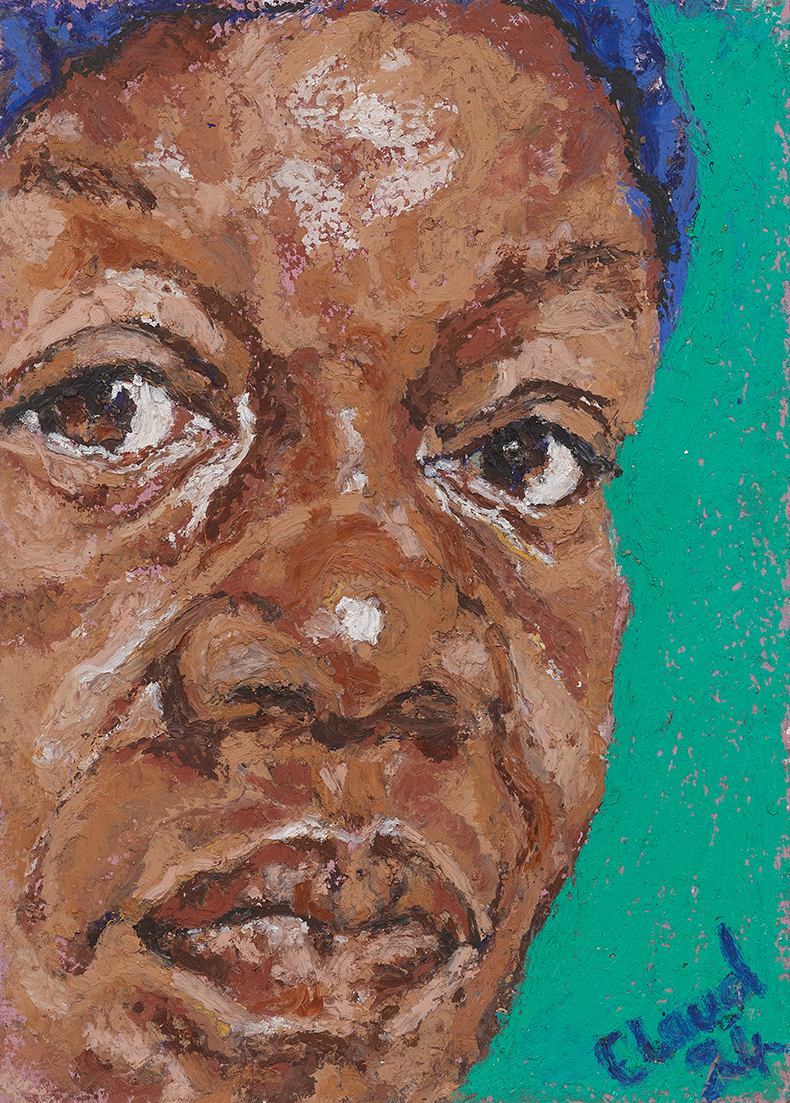
Joffe and Johnson are not alone in shying away from the word ‘portrait’. The late Alice Neel described her paintings of friends and neighbours as ‘pictures of people’. Implied in the word ‘portrait’ is a transactional relationship between sitter and artist. Gainsborough’s paintings of the Tugwell family from 1763 were a commission for which the up-and-coming portraitist would have been expected to flatter his sitters as fashionable and dignified. Humphrey Tugwell appears bulging in a buff waistcoat, his face framed by puffs of periwig. He was a wealthy merchant from nearby Bradford on Avon, rather than a seasonal visitor. In commissioning portraits by a young painter of growing reputation, he invited associations of dynastic power with aspirations to the aristocratic.
It is a power dynamic of a different kind that worries painters – specifically, the ceding of their own power. Along with the commission of a portrait comes the dreaded possibility that a sitter might feel entitled to voice an opinion. One of my interlocutors admitted to falling out irreparably with a friend for whom she had sat. The other, that her studio was lined with canvases turned to the wall after collectors asked to sit, then were shocked to see she had painted them in her own manner, flattery be damned. After decades drawing and painting from life, both Joffe and Johnson relish the occasional indulgence of working from photographs: it gives them an opportunity to do their own thing without having to worry about another person in the studio.
Humphrey Tugwell (c. 1763), Thomas Gainsborough. Photo: Guy Traynor; courtesy Bath Preservation Trust
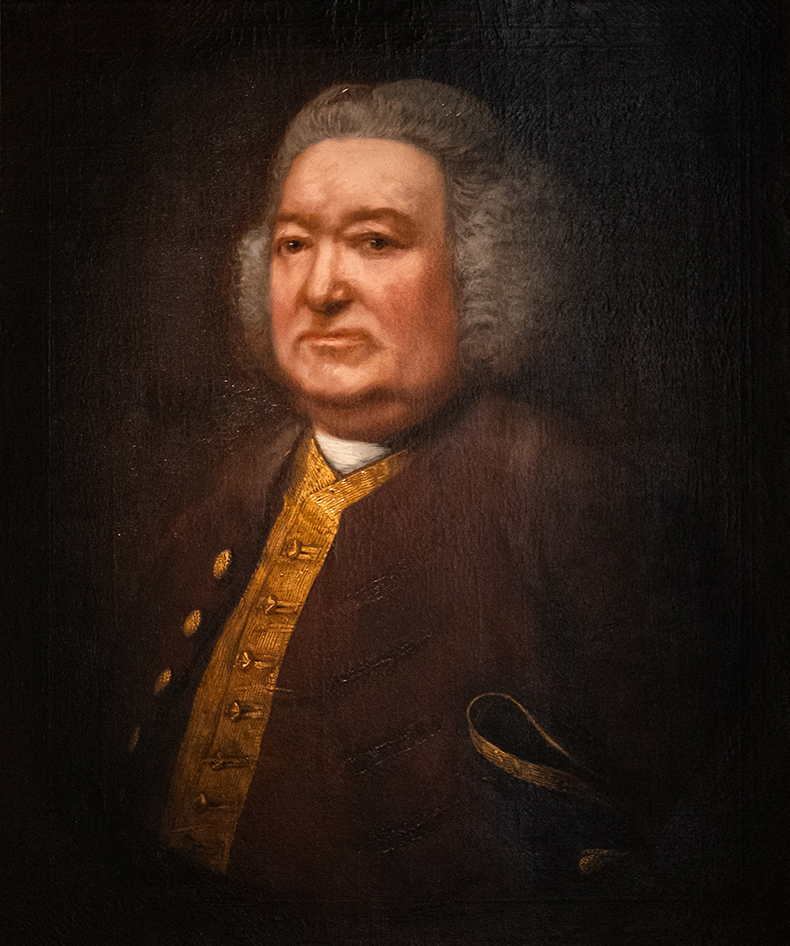
A few days later, I attended a talk by the abstract painter Joan Snyder and was fascinated by how little distance there was between these three artists in the way they discussed their work. Over and above any notion of pictorial subject (or the apparent lack thereof), a painting was, for each, a repository of feelings, thoughts and moods specific to the time it was made. This didn’t translate into anything so literally expressionistic that you would detect it in the finished work; still, it was there, running deep in the paint, like a genetic sequence. Each painter, too, wanted to apprehend the world and the business of painting within it afresh. To challenge herself not to fall back into familiar picture-making tropes. To be surprised by familiar faces, including their own. To see.
I am not sure precisely when the Romantic convention that a portrait captures a deep inner truth came into play, though I’d guess it emerged alongside photography. A photograph addressed the surface: no match for the acuity of the human mind and eye, which could ‘see’ beyond the surface and ensnare something of a sitter’s soul in a portrait (an idea followed to its ghastly conclusion in Oscar Wilde’s The Picture of Dorian Gray, 1891).
Denise and Olivia (2019), Chantal Joffe. Courtesy the artist/Victoria Miro; © the artist
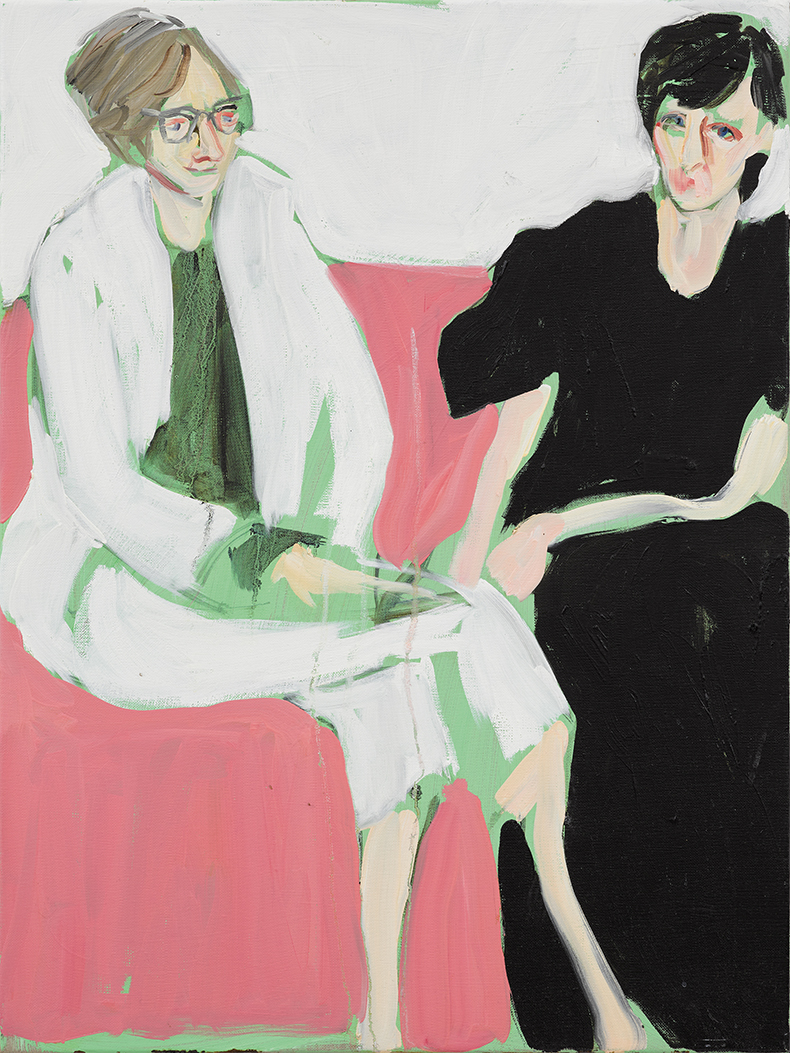
The tension troubling the photographic image today is not between the surface and the soul but between human perception and machine. Supercharged with AI, your mobile phone’s camera second-guesses what you wish to focus on and how the light and landscape should look by judging a potential image against all the existing sunsets, selfies and snoozing labradors available to it. Rather than struggling to see the world afresh, AI conforms with all that has been approved before, smoothing your digital photographs to become blandly pleasing. It flatters, as a Georgian sitter might have hoped their portraitist would.
In a world of machine-learning, it seems imperative that artists are engaged in this business of unlearning how things are ‘meant’ to look. Portraiture may have an image problem but, unflattering as it may be, it is good for us to be reminded that our appearance is not fixed and controllable, but unstable and surprising to those who challenge themselves to see the world afresh.
‘Being There’ is at No 1 Royal Crescent, Bath, until 23 February.
From the January 2025 issue of Apollo. Preview and subscribe here.

